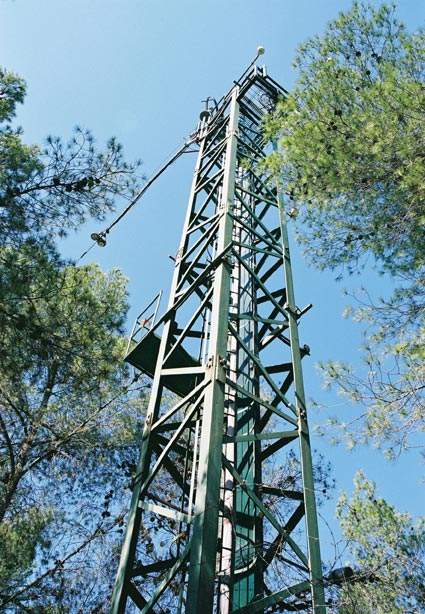Are you a journalist? Please sign up here for our press releases
Subscribe to our monthly newsletter:

The simple formula we’ve learned in recent years – forests remove the greenhouse gas CO2 from the atmosphere, therefore forests prevent global warming – may not be quite as simple as we thought. In research recently published in Science, Weizmann Institute scientists have shown that forests can directly absorb and retain heat, and in at least one type of forest these effects may be strong enough to cancel out a good part of the benefit of lowered CO2.
Semiarid forests cover more than 17% of the earth’s land surface. Over the past 10 years, the Yatir research station at the edge of the Negev Desert has provided a comprehensive picture of the processes taking place in them. Forests counteract the “greenhouse effect” by removing heat-trapping CO2 from the atmosphere and storing it in living trees. Prof. Dan Yakir of the Environmental Sciences and Energy Research Department of the Institute’s Faculty of Chemistry has found that semiarid forests, though not as luxuriant as the temperate forests farther north, are surprisingly good carbon sinks – better than most European pine forests and about on a par with the global average.
But forests do more than just store CO2, and Yakir, together with Dr. Eyal Rotenberg, decided to look at the “total energy budget” of a semiarid forest. The first hint that other processes might be counter-acting the cooling effect of CO2 uptake came when they compared the forest’s albedo – how much sunlight is reflected from its surface back into space – with that of the nearby open shrubland. They found that the dark-colored forest canopy had a much lower albedo, absorbing quite a bit more of the sun’s energy than the pale, reflective surface of surrounding areas.
Next the researchers looked at the mechanisms for “air conditioning” within the forest itself. To cool down, trees in wetter areas use water-cooling systems: They open pores in their leaves and simply let some of the water evaporate. But the semiarid pine forest is not built for evaporation. The scientists found that it uses an efficient alternative air-cooling system. Here, the air in the open spaces between the trees comes into contact with a large surface area, and heat can be easily transferred from the leaves to the air currents. But this efficient, semiarid air-cooling system leads to a reduction in infrared (thermal) radiation out into space. In other words, while the semiarid forest can cool itself well enough, it both absorbs more solar energy (through the albedo effect) and retains more of this energy (by suppressing the emission of infrared radiation). Together, these effects turned out to be stronger than the scientists had expected. “Although the numbers vary with location and conditions,” says Yakir, “we now know it will take decades of forest growth before the ‘cooling’ CO2 sequestration can overtake these opposing warming processes.”
Yakir and Rotenberg asked one more question: If planting semiarid forests can initially lead to warming, what happens when the opposite process – desertification – takes place? By applying what they had learned to existing data, they found that desertification, instead of hastening global warming as is commonly thought, actually mitigates it, at least in the short term. By reflecting sunlight and releasing infrared radiation, the desertification of semiarid lands over the past 35 years has slowed global warming by as much as 20%, compared with the expected effect of the CO2 rise. And in a world in which desertification is continuing at a rate of about 6 million hectares a year, that news might have a significant effect on how we estimate the rate and magnitude of climate change.
Yakir: “Overall, forests remain hugely important climate stabilizers (not to mention the other ecological services they provide), but there are tradeoffs, such as those between carbon sequestration and surface radiation budgets, and we need to take these into consideration when predicting the future.”
Prof. Dan Yakir’s research is supported by the Avron-Wilstaetter Minerva Center for Research in Photosynthesis; the Sussman Family Center for the Study of Environmental Sciences; the Cathy Wills and Robert Lewis Program in Environmental Science; and the estate of Sanford Kaplan.
